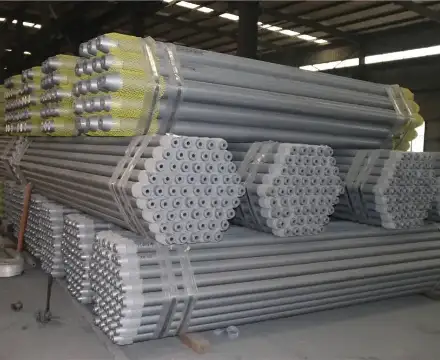Dapeng Town Industrial Park, Tongshan District, Xuzhou City, Jiangsu Province, China
The surface of the members in the space frame accessories is hot-dip galvanized, which can improve the corrosion resistance of the structure in the corrosive natural environment. The thickness of the coating can generally be 80~120μm. Hot-dip galvanizing brings inconvenience to engineering construction, and increases the cost of wire cleaning and reaming, secondary transportation of members and corresponding costs. Once the hot-dip galvanized surface is damaged, the corrosion will spread from point to surface.
Chemically, zinc is more active than iron. Zinc has a protective effect on iron (anodic protection), i.e. protects iron by sacrificing zinc. Therefore, iron will not be easily corroded, while zinc will be depleted. In acidic medium, the corrosion product is soluble zinc sulfate salt, which will be lost from the surface with precipitation cleaning, so the corrosion of zinc can continue.
Therefore, it is not suitable to use hot-dip galvanized anti-corrosion in acidic medium. If an acid-resistant overcoat paint is applied on the hot-dip galvanized layer, it can be used in an acidic medium. During installation, there is inevitable damage to the surface of members, which should be fully considered when selecting anti-corrosion measures. At this stage, the technology of thermal spraying zinc and aluminum layers should be developed, which can overcome the shortcomings of hot-dip galvanizing.Therefore, it is not suitable to use hot-dip galvanized anti-corrosion in acidic medium. If an acid-resistant overcoat paint is applied on the hot-dip galvanized layer, it can be used in an acidic medium. During installation, there is inevitable damage to the surface of members, which should be fully considered when selecting anti-corrosion measures. At this stage, the technology of thermal spraying zinc and aluminum layers should be developed, which can overcome the shortcomings of hot-dip galvanizing.